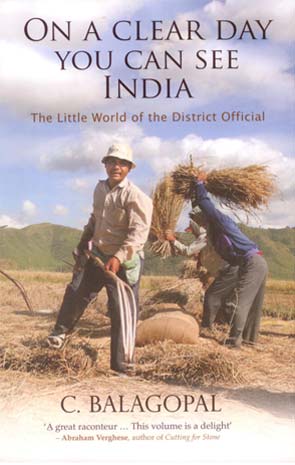Traditionally, Mizo women have played a productive role not just within their homes – as wives and mothers – but have also made a mark as entrepreneurs, teachers and officers in the state administration, writes Ninglun Hanghal.
Aziawl: In a historic victory for the women’s movement in Mizoram, the State Law Commission is now in the final process of reviewing The Mizo Marriage Bill, 2013, The Mizo Inheritance Bill, 2013, and The Mizo Divorce Bill, 2013, which will be introduced in the State Assembly after public consultations across the northeastern state. This is the result of a unique struggle that has gone on for over a decade, waged by the Mizo Hmeichhe Insuihkhawm Pawl (MHIP), an apex body representing several local women’s groups.
After years of advocacy and repeated attempts at sending memorandums and draft bills to the Assembly and other executive bodies, the MHIP finally managed to push the system into considering judicial and legislative changes in the marriage, divorce, and inheritance and succession laws in order to safeguard the interests of ordinary women.
The dynamic Pi Sangkhumi, 60, former president of MHIP, is a happy woman. It’s been her long-cherished dream to ensure reforms related to marriage and inheritance as she has seen generations of Mizo women suffer because of the legal biases in the system. Explaining the need for these reforms, she says, “A Mizo woman has never had any rights over property whether moveable, immoveable or even gifts, known as ‘bungrua’ in the local language, that are given to her at the time of marriage. Her husband can divorce her at any time and throw her out of the house without providing any financial support.”
Traditionally, Mizo women have played a productive role not just within their homes – as wives and mothers – but have also made a mark as entrepreneurs, teachers and officers in the state administration. However, just as the state’s history has been strife-torn, so has the life of its women, who have borne the worst consequences of the instability and violence that had marked the region.
The years when the Mizo National Front (MNF), an underground movement, was actively agitating against the government were particularly difficult. Earlier known as the Mizo National Famine Front, formed to help ease the immense suffering of the local people during the severe Mautam Famine of 1959, the organisation renamed itself the MNF in 1961. The state’s inaction during famine led to a wave of secessionist uprisings and armed insurrections during the entire decade of the sixties.
Pi Sangkhumi can “never forget those difficult days”. Her father, one of the key leaders of the MNF, was killed during the peak of the movement. His death spelled tough times for her family but they coped as best as they could. A year later, in 1965, she went for higher studies to Shillong, the capital of the neighbouring state of Meghalaya. Being a brilliant student enabled her to study and live free-of-cost there, as her expenses were covered by scholarships. “There was no way financial support could come from home,” she recalls.
All the while that Pi Sangkhumi was coping with her personal struggles she was acutely aware of the difficulties being faced by women at large, particularly during the two-decade-long bloody conflict – from mid-1960s to mid-80s. Even today, she and many others are trying hard to leave behind those bad memories. So much so that she finds it painful to talk about it.
An incident involving the brutal gang rape of two young women by army jawans in 1966 is a case in point. On a fateful November night, the MNF attacked a convoy of Army personnel advancing towards the Champhai village in east Mizoram. In retaliation the Army herded the villagers together and set fire to their homes. The two women, the daughters of prominent community leaders, were held separately in a small hut where soldiers allegedly took turns in raping them.
After 47 years, a compensation of Rs 5 lakh each has recently been announced by the central government for the two survivors, who are in a pitiable condition today. Reportedly, one of them just sits quietly all day with a blank expression on her face and needs assistance to even move around. The other survivor suffers from extreme paranoia and nightmares. She refuses to sleep alone and is suspicious of everyone around her. This story is common to many victims who have endured such traumas during the years of the revolt.
It was these crimes being committed against women that prompted various women’s groups from across the state and even outside to come together and form a powerful organisation that worked to fight for the collective rights of the women of the state. The MHIP was created in 1974 when Mizoram was still a Union Territory – it got full statehood in 1986 – and it literally means binding women together. Its logo ‘hmui’, a charkha, symbolises Mizo women’s creativity and sense of self reliance. It is also the device they use to weave the beautiful ‘puanchei’, their traditional dress. Tlawmngaihna, or philanthropy – a key characteristic of the Mizo society – was the other reason behind the setting up of MHIP.
Besides implementing several initiatives for the empowerment of women, particularly related to education and entrepreneurship development in the recent decades, MHIP has been focusing on campaigning against domestic violence, rape and other forms of gender violence. One of their main challenges has been to convince people to change traditional systems and customs that suppress women, both with the family and in society.
Pi Sangkhumi is of the opinion that while “Mizo women are definitely a part of the work force now, they are still not the decision-makers and that needs to change”. Which is why MHIP pursing the legislative route.
The practice of quoting a “bride price” irks Pi Sangkhumi no end. “It’s cash or kind paid to the bride’s father during marriage but, I ask, is one supposed to ‘purchase’ one’s bride? What status will such a woman have in her marital home?” remarks the veteran activist, who is also a teacher and a retired member of the State Public Service Commission.
According to her, the “bride price” custom started around half a century ago and was meant to be “a phuahchop”, or a practice introduced temporarily. But over the years, it has become a ‘tradition’ that is faithfully being followed. “A regressive practice should be prohibited by the legal system. We cannot overturn a custom but we can definitely make it better or modify it,” she argues.
Drawing from examples like child marriage, the purdah system and sati – practices which are illegal in India now – Pi Sangkhumi asks, “Why can’t we legally ban the Mizo bride price practice, too?” She further adds, “When laws such as the Hindu Marriage Act can be passed and implemented in other parts of India, why can’t we pass a Mizo Inheritance or Divorce Law?”
Another demand that she and her group are making is for a 33 per cent reservation in the political system. As a first step towards realising their dream, MHIP is advocating for an increased induction of women candidates into local political parties.
Surely if anyone can make change happen for Mizo women it’s the MHIP, which has a presence in 16 blocks in the state with 12 joint headquarters and 740 local branches. Pi Sangkhumi, who has penned the history of the Mizo women’s movement, titled ‘MHIP Chanchin 1974-2009’, says with a broad smile, “During our general assembly meetings when more than 2,000 women gather, even the Vanapa hall – the biggest public hall in Mizoram – is small for us. That’s the kind of woman power we have.”
Having worked hard on the legislation on marriage, divorce and inheritance, Pi Sangkhumi is on to another task these days: getting important laws related to domestic violence, rape and human rights translated into the Mizo language. She is doing this because she strongly feels “it is important that every hardworking Mizo woman understands her rights”.





















